
Jean-Louis Lebris de Kérouac, known as Jack Kerouac, was an American novelist and poet who, alongside William S. Burroughs and Allen Ginsberg, was a pioneer of the Beat Generation.

Chase County is a county located in the U.S. state of Kansas. Its county seat and most populous city is Cottonwood Falls. As of the 2020 census, the county population was 2,572. The county was named for Salmon Chase, a U.S. Senator from Ohio that was a Kansas statehood advocate.

The Beat Generation was a literary subculture movement started by a group of authors whose work explored and influenced American culture and politics in the post-World War II era. The bulk of their work was published and popularized by Silent Generationers in the 1950s, better known as Beatniks. The central elements of Beat culture are the rejection of standard narrative values, making a spiritual quest, the exploration of American and Eastern religions, the rejection of economic materialism, explicit portrayals of the human condition, experimentation with psychedelic drugs, and sexual liberation and exploration.
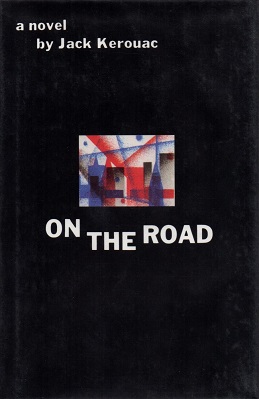
On the Road is a 1957 novel by American writer Jack Kerouac, based on the travels of Kerouac and his friends across the United States. It is considered a defining work of the postwar Beat and Counterculture generations, with its protagonists living life against a backdrop of jazz, poetry, and drug use. The novel is a roman à clef, with many key figures of the Beat movement, such as William S. Burroughs, Allen Ginsberg, and Neal Cassady represented by characters in the book, including Kerouac, himself, as the narrator, Sal Paradise.
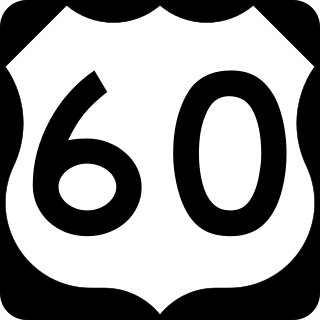
U.S. Route 60 is a major east–west United States highway, traveling 2,655 miles (4,273 km) from southwestern Arizona to the Atlantic Ocean coast in Virginia. The highway's eastern terminus is in Virginia Beach, Virginia, where it is known as General Booth Boulevard, just south of the city's Oceanfront resort district at the intersection of Rudee Point Road and Harbor Point. Its original western terminus was in Springfield, Missouri; it was then extended to Los Angeles, California, but in 1964, it was truncated to end southwest of Brenda, Arizona, at an interchange with Interstate 10 (I-10) after the US 60 highway designation was removed from California. I-10 replaced US 60 from Beaumont, California, to Arizona, and California State Route 60 (SR 60) replaced US 60 from Los Angeles to Beaumont.
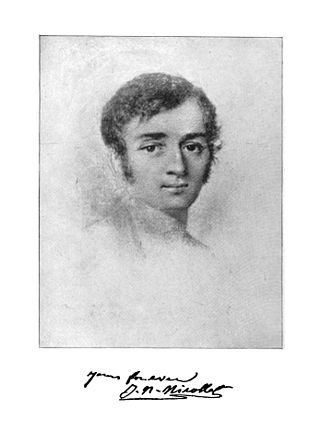
Joseph Nicolas Nicollet, also known as Jean-Nicolas Nicollet, was a French geographer, astronomer, and mathematician known for mapping the Upper Mississippi River basin during the 1830s. Nicollet led three expeditions in the region between the Mississippi and Missouri Rivers, primarily in Minnesota, South Dakota, and North Dakota.
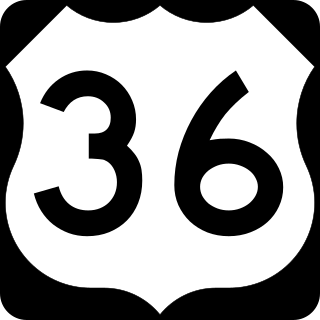
U.S. Route 36 (US 36) is an east–west United States highway that travels approximately 1,414 miles (2,276 km) from Rocky Mountain National Park, Colorado to Uhrichsville, Ohio. The highway's western terminus is at Deer Ridge Junction, an intersection in Rocky Mountain National Park, Colorado, where it meets US 34. Its eastern terminus is at US 250 in Uhrichsville, Ohio.

The genre of travel literature or travelogue encompasses outdoor literature, guide books, nature writing, and travel memoirs.

Desolation Angels is a semi-autobiographical novel written by Beat Generation author Jack Kerouac, which makes up part of his Duluoz Legend. It was published in 1965, but was written years earlier, around the time On the Road was in the process of publication. The events described in the novel take place from 1956-1957. Much of the psychological struggle which the novel's protagonist, Jack Duluoz, undergoes in the novel reflects Kerouac's own increasing disenchantment with the Buddhist philosophy. Throughout the novel, Kerouac discusses his disenchantment with fame, and complicated feelings towards the Beat Generation. He also discusses his relationship with his mother and his friends such as Allen Ginsberg, Neal Cassady, Lucienn Carr and William S. Burroughs. The novel is also notable for being a relatively positive portrayal of homosexuality and homosexual characters, despite its use of words that were at the time considered homophobic slurs.

A road trip, sometimes spelled roadtrip, is a long-distance journey traveled by automobile.

John Joseph Mathews became one of the Osage Nation's most important spokespeople and writers of the mid-20th century, and served on the Osage Tribal Council from 1934 to 1942. Mathews was born into an influential Osage family, the son of William Shirley Mathews an Osage Nation tribal councilor. He studied at the University of Oklahoma, Oxford University, and the University of Geneva and served as a pilot during World War I.

Mexico City Blues is a long poem by Jack Kerouac, composed of 242 "choruses" or stanzas, which was first published in 1959. Written between 1954 and 1957, the poem is the product of Kerouac's spontaneous prose technique, his Buddhist faith, emotional states, and disappointment with his own creativity—including his failure to publish a novel between 1950's The Town and the City and the more widely acclaimed On the Road (1957).

Blue Highways is an autobiographical travel book, published in 1982, by William Least Heat-Moon, born William Trogdon.

Down Under is the British title of a 2000 travelogue book about Australia written by best-selling travel writer Bill Bryson. In the United States and Canada it was published titled In a Sunburned Country, a title taken from the famous Australian poem, "My Country". It was also published as part of Walk About, which included Down Under and another of Bryson's books, A Walk in the Woods: Rediscovering America on the Appalachian Trail, in one volume.
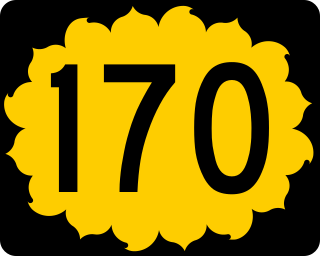
K-170 is a 21.759-mile-long (35.018 km) state highway in the U.S. State of Kansas. K-170's western terminus is at K-99 about 12 miles (19 km) north of Emporia, and the eastern terminus is at K-31 on the west side of Osage City, a mile south of the K-31 intersection with U.S. Route 56 (US-56). K-170 provides access, via county roads, to Lyons County State Fishing Lake.
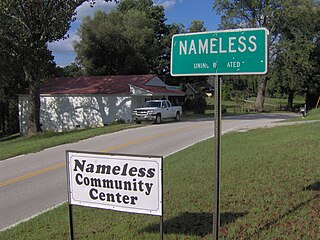
Nameless is an unincorporated community in Jackson County, Tennessee, United States.
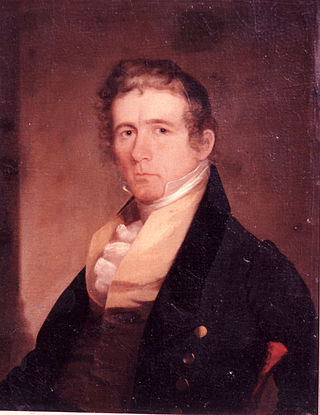
George Champlin Sibley was an American explorer, soldier, Indian agent, politician.

Kihegashugah or "Little Chief" was a chief of the Osage Nation in central Missouri. Tribal folklore said that he was the great-grandson of an Osage man who visited France in 1725. Kihegashugah was said to be one of the most distinguished of the Osage Indians. He was one of six members of his tribe to travel to France in the 1820s.

PrairyErth: is a 1991 book about Chase County, Kansas by American author William Least Heat-Moon. The author termed it a deep map, popularizing that term for an intensive look at a particular place that included discussion of geography, history, and ecology. The book featured in the bestsellers list of both Publishers Weekly and The New York Times.



















